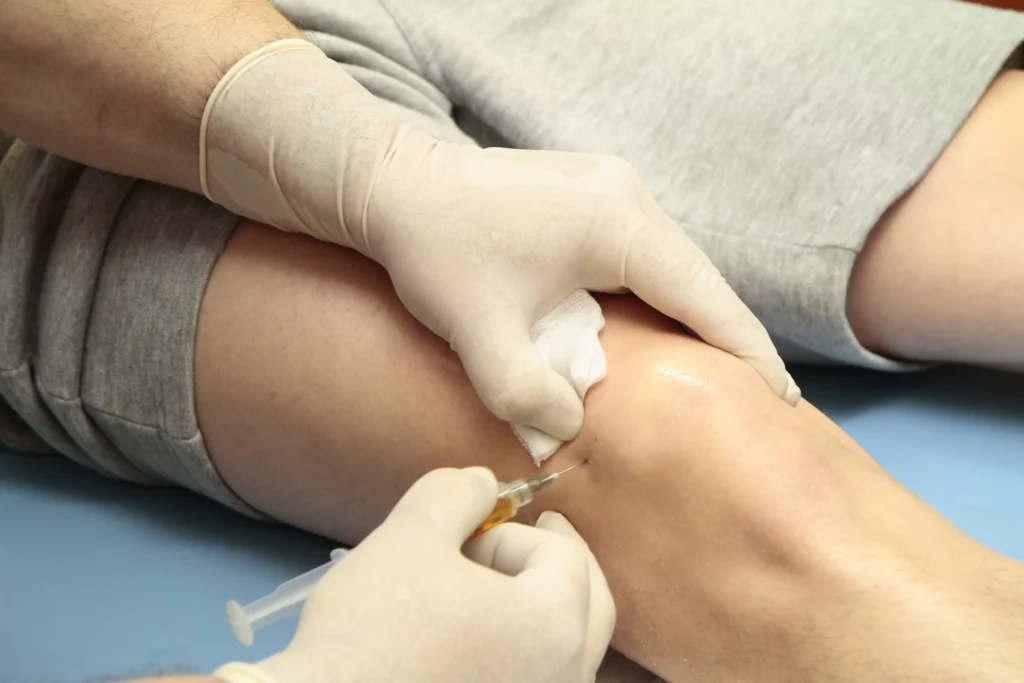ACI (Autologous Chondrocyte Implantation) therapy is an advanced surgical procedure used to repair cartilage damage in the knee. Unlike general treatments for knee pain, ACI therapy targets specific cartilage defects that cause discomfort and limit mobility. This therapy can be a game-changer for individuals who haven’t responded to other non-surgical treatments.
In this article, we’ll cover everything you need to know about ACI therapy for knee pain, including its process, benefits, risks, and alternatives.
What is ACI Therapy?

Autologous Chondrocyte Implantation (ACI) is a regenerative treatment that uses your own cartilage cells (chondrocytes) to repair damaged cartilage in the knee joint. Cartilage damage can occur due to injuries, aging, or degenerative conditions, often causing pain and stiffness.
ACI therapy is particularly effective for focal cartilage defects — localized damage that hasn’t yet progressed to widespread arthritis.
How Does ACI Therapy Work?
ACI therapy is a two-step surgical procedure:
Step 1: Cartilage Cell Harvesting
- A surgeon removes a small piece of healthy cartilage from a non-weight-bearing part of your knee during a minimally invasive procedure.
- The cartilage sample is sent to a laboratory where the chondrocyte cells are cultured and multiplied over several weeks.
Step 2: Cell Implantation
- The surgeon reopens the knee to implant the cultured cartilage cells into the damaged area.
- The new cells gradually integrate into the knee joint, regenerating cartilage tissue over time.
Who Can Benefit from ACI Therapy for Knee Pain?
ACI therapy is typically recommended for:
✅ Patients with focal cartilage defects in the knee
✅ Younger patients (typically under 50 years old)
✅ Those with localized knee pain who haven’t responded to physical therapy or other treatments
✅ Individuals without widespread osteoarthritis
Conditions Treated by ACI Therapy
- Cartilage defects caused by trauma or injury
- Osteochondritis dissecans
- Degenerative cartilage lesions
- Symptomatic cartilage damage without bone involvement
Advantages of ACI Therapy for Knee Pain
✅ Uses your own cells, reducing the risk of rejection
✅ Long-lasting results
✅ Can improve knee function and reduce pain
✅ Preserves the knee joint, delaying or avoiding the need for knee replacement
Recovery Process
Recovery from ACI therapy can take several months and involves:
- Initial rest and limited weight-bearing
- Gradual physical therapy to restore range of motion
- Strengthening exercises
- Full recovery typically takes 6 to 12 months
Risks and Side Effects
While ACI therapy is generally safe, there are some risks:
- Infection
- Knee stiffness
- Graft failure
- Prolonged recovery time
- Swelling or inflammation
ACI vs. Other Knee Pain Treatments
| Treatment | Purpose | Recovery Time | Best For |
| ACI Therapy | Cartilage regeneration | 6–12 months | Focal cartilage defects |
| Physical Therapy | Muscle strengthening | Weeks | General knee pain |
| Acupuncture | Pain relief | Several sessions | Osteoarthritis, mild knee pain |
| Corticosteroid Injections | Temporary pain relief | Days to weeks | Inflammation-related knee pain |
| Knee Replacement | Severe arthritis | 6–12 weeks | Advanced cartilage damage |
Acupuncture as an Alternative Treatment
For those looking for non-surgical options, acupuncture is another therapy that can help manage knee pain, particularly in cases of osteoarthritis. Acupuncture involves inserting thin needles into specific points to:
- Reduce inflammation
- Improve blood circulation
- Relieve pain
Studies suggest that acupuncture can improve knee function and reduce pain when combined with other treatments like physical therapy.
Common Acupuncture Points for Knee Pain
- ST36 (Zusanli): Below the knee for general pain relief
- SP9 (Yinlingquan): Inner knee for swelling and inflammation
- GB34 (Yanglingquan): Outer knee for joint health
Also Read: Icd Knee Pain – Everything You Need to Know!
Can ACI Therapy Be Combined with Other Treatments?
Yes, ACI therapy can be combined with:
- Physical therapy
- Pain management techniques
- Acupuncture
- Bracing
- Anti-inflammatory medications
Combining treatments can speed up recovery and improve overall knee function.
How Effective is ACI Therapy for Knee Pain?
Studies have shown that ACI therapy provides long-lasting pain relief and improved knee function in 70–90% of patients with cartilage defects. However, its success depends on factors like:
- Age
- Size and location of the defect
- Adherence to rehabilitation
When to Consider ACI Therapy for Knee Pain
You might be a candidate for ACI therapy if:
- You have knee pain from a cartilage defect
- Other treatments haven’t provided relief
- You’re young and active
- Your knee joint is otherwise healthy
FAQs: ACI Therapy for Knee Pain
1: How long does recovery from ACI therapy take?
Recovery typically takes 6–12 months, including physical therapy and gradual return to activity.
2: Is ACI therapy covered by insurance?
Coverage varies depending on your insurance plan and the severity of your condition.
3: Can ACI therapy treat arthritis-related knee pain?
ACI is more suitable for cartilage defects than widespread arthritis.
4: What are the success rates of ACI therapy?
Success rates range between 70–90%, depending on patient health and defect size.
5: Can acupuncture be used alongside ACI therapy?
Yes, acupuncture can help manage pain and improve overall knee function during recovery
Conclusion
ACI therapy for knee pain is an innovative solution for patients with cartilage defects who haven’t responded to conventional treatments. While the recovery process is lengthy, the procedure can provide lasting pain relief and improved knee function. However, it’s essential to consult with an orthopedic specialist to determine if ACI is the right option for your specific condition. If you’re considering ACI therapy or exploring non-surgical options like acupuncture, a personalized treatment plan can help you regain mobility and enjoy a pain-free life.






